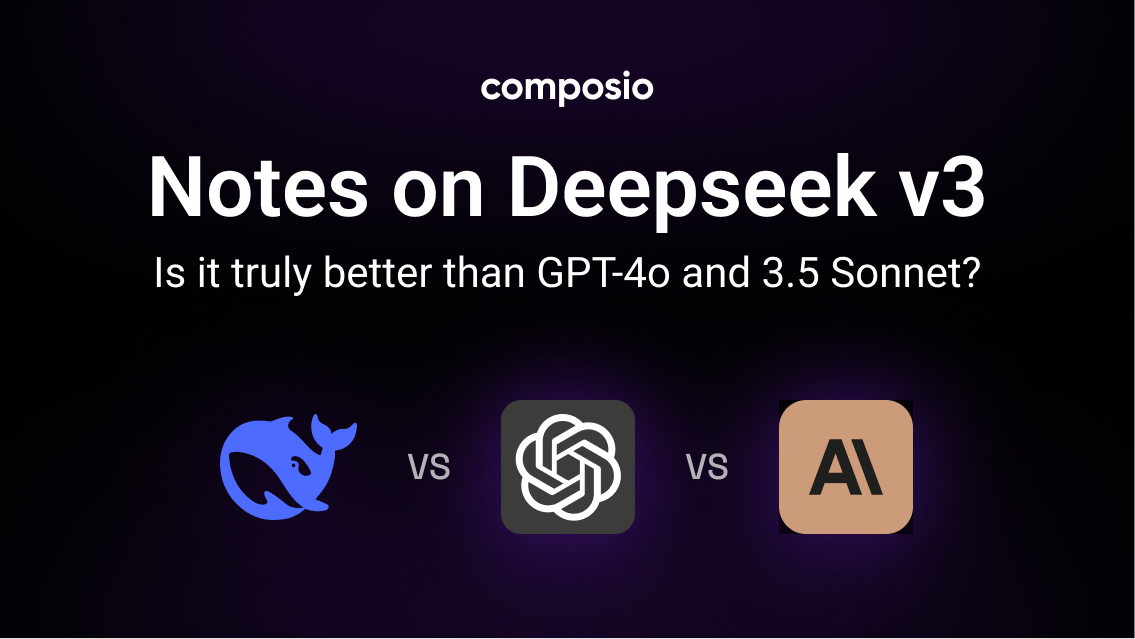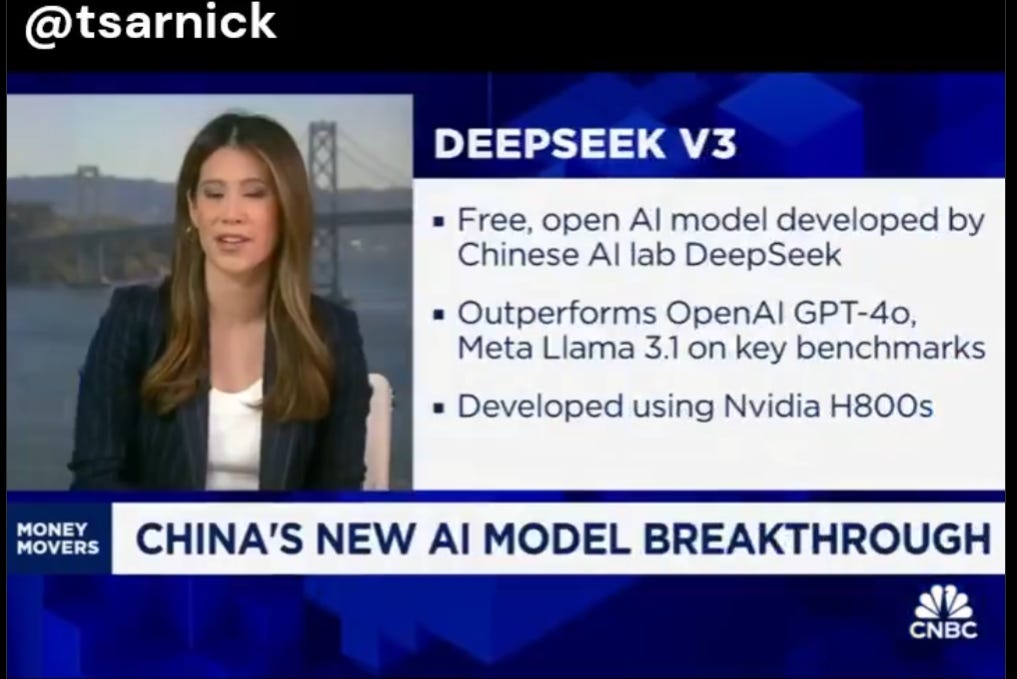Overview
-
Sectors Restaurant
-
Posted Jobs 0
-
Viewed 27
Company Description
DeepSeek: is this China’s ChatGPT Moment and a Wake-up Call for The US?
DeepSeek’s technological feat has amazed everybody from Silicon Valley to the whole world. The Chinese laboratory has actually developed something monumental-they have actually introduced an effective open-source AI model that equals the best provided by the US companies. Since AI business require billions of dollars in financial investments to train AI models, DeepSeek’s development is a masterclass in optimum use of restricted resources. This shows that along with financial investments, insight too is needed to innovate in the truest sense. It also goes on to show how requirement can drive development in unforeseen ways.
China’s development as a strong player in AI is happening at a time when US export controls have actually limited it from accessing the most advanced NVIDIA AI chips. These controls have actually likewise limited the scope of Chinese tech firms to contend with their bigger western equivalents. Consequently, these companies turned to downstream applications instead of building proprietary models. Advanced hardware is essential to constructing AI product or services, and DeepSeek attaining an advancement demonstrates how restrictions by the US may have not been as reliable as it was meant.

Under these situations, DeepSeek’s fame is a story in itself. The Chinese AI business apparently just invested $5.6 million to establish the DeepSeek-V3 design which is remarkably low compared to the millions pumped in by OpenAI, Google, and Microsoft. Sam Altman-led OpenAI reportedly a tremendous $100 million to train its GPT-4 design. On the other hand, DeepSeek trained its breakout model using GPUs that were thought about last generation in the US. Regardless, the outcomes achieved by DeepSeek competitors those from much more costly models such as GPT-4 and Meta’s Llama.
DeepSeek is based out of HangZhou in China and has business owner Lian Wenfeng as its CEO. Wenfeng, who is likewise the co-founder of the quantitative hedge fund High-Flyer, has actually been working on AI projects for a very long time. Reportedly in 2021, he purchased thousands of NVIDIA GPUs which lots of saw to be another quirk of a billionaire. However, in 2023, he launched DeepSeek with an aim of dealing with Artificial General Intelligence. In among his interviews to the Chinese media, Wenfeng said that his choice was encouraged by clinical interest and not earnings. Reportedly, when he established DeepSeek, Wenfeng was not searching for skilled engineers. He desired to work with PhD trainees from China’s premier universities who were aspirational. Reportedly, numerous of the group members had been released in leading journals with numerous awards. Wenfeng’s ethos and belief system is reflected in DeepSeek’s open-sourced nature which has made affection from the global AI neighborhood.

Setting a brand-new standard for development

Even as AI business in the US were utilizing the power of innovative hardware like NVIDIA H100 GPUs, DeepSeek relied on less powerful H800 GPUs. This could have been only possible by deploying some innovative techniques to maximise the effectiveness of these older generation GPUs. Apart from older generation GPUs, technical designs like multi-head hidden attention (MLA) and Mixture-of-Experts make DeepSeek models cheaper as these architectures need fewer calculate resources to train.
DeepSeek-V3 has now gone beyond bigger designs like OpenAI’s GPT-4, Anthropic’s Claude 3.5 Sonnet, and Meta’s Llama 3.3 on numerous criteria, which include coding, resolving mathematical issues, and even finding bugs in code. Even as the AI neighborhood was grasping to DeepSeek-V3, the AI lab released yet another thinking model, DeepSeek-R1, recently. The R1 has outperformed OpenAI’s most current O1 model in numerous standards, including mathematics, coding, and basic understanding.

DeepSeek is acquiring global attention at a time when OpenAI was reorganizing itself to be a for-profit organisation. The Chinese AI lab has actually launched its AI designs as open source, a stark contrast to OpenAI, enhancing its global effect. Being open source, designers have access to DeepSeeks weights, allowing them to develop on the design and even fine-tune it with ease. This open-source nature of AI models from China could likely imply that Chinese AI tech would ultimately get embedded in the international tech environment, something which so far only the US has been able to accomplish.
What is at stake on the international phase?

The runaway success of DeepSeek likewise raises some concerns around the wider ramifications of China’s AI improvement. While being open-source, it permits international cooperation; its development, based on Chinese state policies, could possibly prevent its expansion.

Critics and experts have stated that such AI systems would likely show authoritarian views and censor dissent. This is something that has actually been a raving issue when it pertained to the debate around allowing ByteDance’s TikTok in the US. While mostly pleased, some members of the AI neighborhood have questioned the $6 million price tag for constructing the DeepSeek-V3. Additionally, lots of developers have mentioned that the design bypasses concerns about Taiwan and the Tiananmen Square occurrence.

Now, more than ever, there are questions on if AI would show democratic values and openness, specifically if it has actually been established by authoritarian government-led nations.
Why is the US rattled?
On the 2nd day as the President of the United States, Donald Trump revealed the Stargate Project, a huge $500 billion initiative that unites tech titans OpenAI, Oracle, and SoftBank. In his address, Trump explicitly said that the US intends to have an edge over China. The Stargate task intends to develop cutting edge AI facilities in the US with over 100,000 American tasks. Trump highlighted how he wants the US to be the world leader in AI. “This project guarantees that the United States will remain the global leader in AI and technology, rather than letting rivals like China gain the edge,” Trump said.
The rushed announcement of the mighty Stargate Project suggests the desperation of the US to keep its top position. While DeepSeek might or might not have stimulated any of these advancements, the Chinese lab’s AI models developing waves in the AI and developer neighborhood around the world is enough to send feelers.
Moreover, China’s breakthrough with DeepSeek obstacles the long-held notion that the US has been spearheading the AI wave-driven by huge tech like Google, Anthropic, and OpenAI, which rode on enormous financial investments and cutting edge facilities. The undeniable AI leadership of the US in AI showed the world how it was important to have access to huge resources and cutting-edge hardware to guarantee success. DeepSeek is in a way undermining the assumption that US-based AI business have the advantage over AI companies from other nations. Until last year, many had actually declared that China’s AI developments were years behind the US.
The Chinese AI laboratory has likewise revealed how LLMs are increasingly ending up being commoditised. This might likely threaten the one-upmanship US tech giants have more than their equivalents from the remainder of the world. The story of America’s AI leadership being invincible has been shattered, and DeepSeek is showing that AI innovation is just not about financing or having access to the very best of facilities. This likewise highlights the requirement for the US to adjust and innovate faster if it aims to preserve its leadership.


